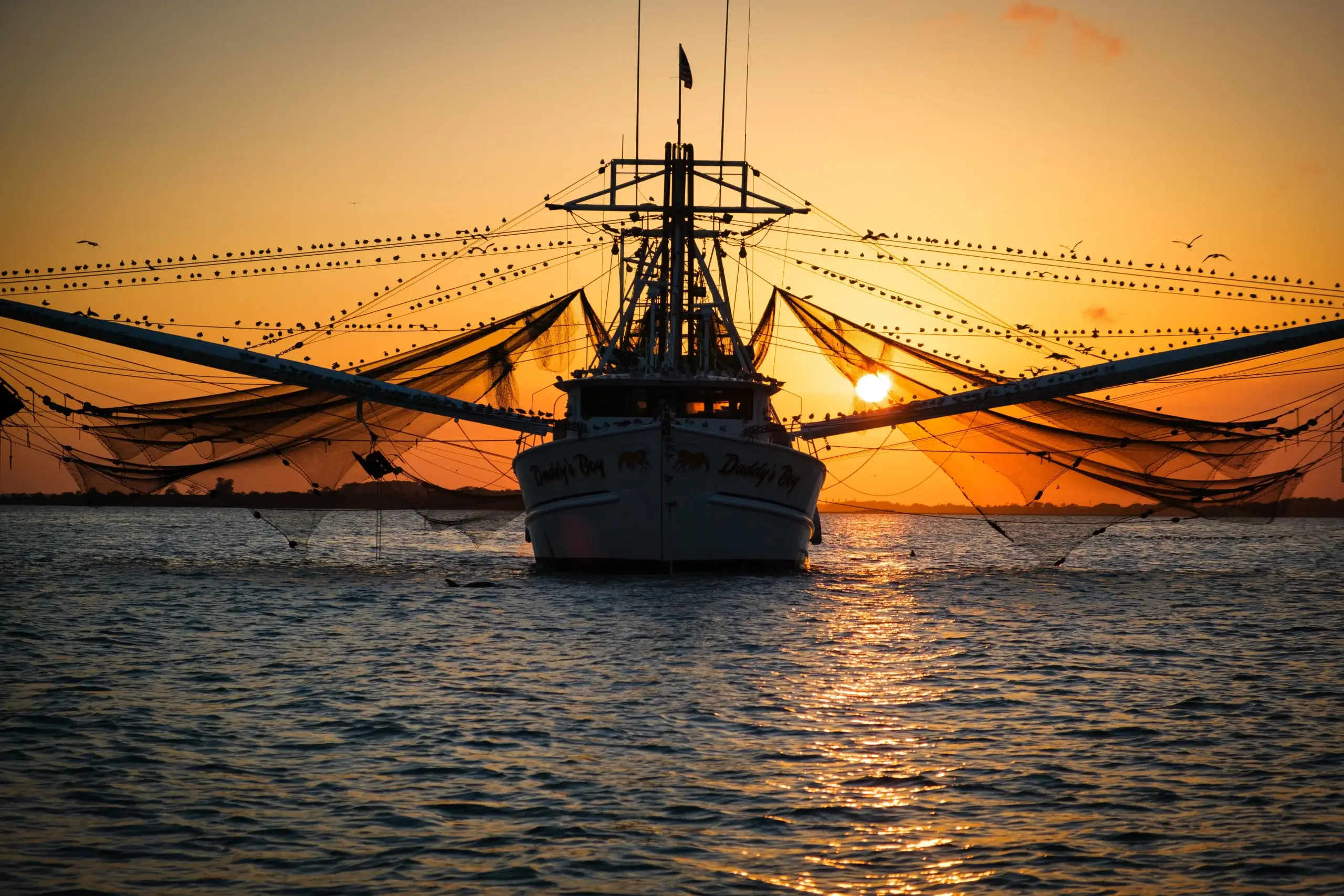The Gulf, a vibrant body of water bordered by the United States, Mexico, and Cuba, has been a cornerstone of maritime activity for centuries. Its rich resources and strategic location have supported livelihoods, fueled economies, and driven technological advancements. From the early days of shrimp boats dotting the coastline to the towering oil rigs that now define its offshore waters, the Gulf’s maritime economy has evolved dramatically over time. This blog explores the key industries that have shaped the Gulf’s economic landscape and examines how the region continues to adapt to new challenges and opportunities.
The Early Days: Fishing and Coastal Trade
The Gulf’s maritime economy began with fishing and coastal trade, activities that predate European colonization. Indigenous peoples relied on its waters for sustenance, fishing for species like redfish, oysters, and shrimp.
Shrimping: The Gulf’s Signature Industry
By the 19th century, shrimping had become a cornerstone of the Gulf’s economy. Coastal communities like Biloxi, Mississippi, and Rockport, Texas, became hubs of shrimping activity, with fleets of small boats venturing into the Gulf’s shallow waters.
Key Developments:
- Technological Advancements: The introduction of motorized trawlers in the early 20th century revolutionized shrimping, allowing fishermen to venture farther and catch more.
- Processing Plants: Onshore facilities streamlined the cleaning, freezing, and packaging of shrimp, turning it into a global export.
Other Fishing Industries
In addition to shrimp, the Gulf’s waters teemed with fish and shellfish that supported local and commercial fisheries. Red snapper, grouper, oysters, and crabs remain vital to the region’s culinary and economic identity.

The Rise of Oil and Gas
In the early 20th century, the discovery of oil in Texas and Louisiana signaled a dramatic shift in the Gulf’s maritime economy. Offshore drilling began in the 1930s, with the first platforms installed in shallow waters near the coast.
Offshore Oil Rigs: A Game-Changer
The expansion of offshore drilling in the mid-20th century transformed the Gulf into a global energy hub. Today, thousands of platforms extract oil and natural gas from beneath the seabed.
Key Impacts:
- Economic Growth: The oil and gas industry generates billions of dollars annually and supports thousands of jobs in engineering, logistics, and maintenance.
- Technological Innovations: The development of deepwater drilling techniques and floating platforms has allowed companies to tap into reserves located miles below the ocean surface.
- Environmental Concerns: Oil spills, such as the Deepwater Horizon disaster in 2010, highlighted the risks associated with offshore drilling and sparked debates over the industry’s environmental impact.

Shipping and Trade: The Gulf as a Global Gateway
The Gulf’s strategic location has made it a critical hub for maritime trade. Major ports like Houston, New Orleans, and Tampa handle millions of tons of cargo annually, connecting North America to global markets.
Key Commodities:
- Energy Exports: The Gulf is a leading exporter of crude oil, liquefied natural gas (LNG), and refined petroleum products.
- Agricultural Products: Grain, soybeans, and other crops from the Midwest are transported via the Mississippi River to Gulf ports for export.
- Consumer Goods: Imports of electronics, clothing, and vehicles flow through Gulf ports, supporting domestic markets.
Infrastructure Developments:
- Port Expansions: Deepening shipping channels and modernizing port facilities have boosted the Gulf’s capacity to handle larger vessels.
- Intermodal Connectivity: Railroads, highways, and pipelines link Gulf ports to inland markets, streamlining logistics.

Tourism and Recreation
The Gulf’s warm waters and sandy beaches have long attracted tourists, contributing to a robust tourism economy. In addition to coastal resorts, activities like sportfishing, boating, and diving generate significant revenue.
Sportfishing:
- Anglers from around the world flock to the Gulf to catch prized species like marlin, tuna, and tarpon.
- Fishing tournaments, such as the Destin Fishing Rodeo, draw crowds and boost local economies.
Eco-Tourism:
- The Gulf’s natural wonders, including the Flower Garden Banks National Marine Sanctuary, attract divers and snorkelers eager to explore coral reefs and marine life.
- Birdwatching tours highlight the region’s importance as a migratory stopover for countless species.
The Future of the Gulf’s Maritime Economy
As the Gulf continues to evolve, its maritime economy faces both challenges and opportunities. Key trends shaping its future include:
1. Sustainability and Conservation
Efforts to balance economic growth with environmental stewardship are gaining momentum. Initiatives to reduce overfishing, restore wetlands, and prevent pollution are critical to preserving the Gulf’s resources.
2. Renewable Energy
The Gulf has significant potential for offshore wind energy. Floating wind farms could complement the region’s oil and gas infrastructure, providing clean energy and diversifying the economy.
3. Technological Advancements
Automation, artificial intelligence, and advanced materials are transforming industries like shipping and energy, improving efficiency and safety.
4. Climate Resilience
Rising sea levels and stronger hurricanes pose threats to coastal infrastructure and industries. Investments in resilient design and disaster preparedness are essential for safeguarding the Gulf’s economy.
Conclusion
From humble shrimp boats to towering oil rigs, the Gulf’s maritime economy has undergone a remarkable transformation. Its rich history and ongoing innovations highlight the region’s importance as a global economic powerhouse. By embracing sustainability, advancing technology, and preparing for future challenges, the Gulf can continue to thrive as a hub of maritime activity and a vital resource for generations to come.

